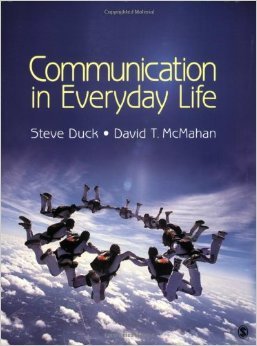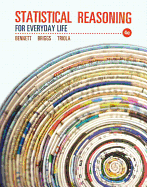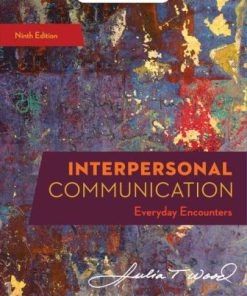Instructor Manual For Communication in Everyday Life by Steve Duck (Author), David T. McMahan
$35.00 Original price was: $35.00.$26.50Current price is: $26.50.
Instructor Manual For Communication in Everyday Life by Steve Duck (Author), David T. McMahan
Communication in Everyday Life by Steve Duck (Author), David T. McMahan

Product details:
- ISBN-10 : 1544349874
- ISBN-13 : 978-1544349879
- Author: Steve Duck, David T. McMahan
Communication in Everyday Life: A Survey of Communication offers an engaging introduction to communication based on the belief that communication and relationships are always interconnected. Best-selling authors Steve Duck and David T. McMahan incorporate this theme of a relational perspective and a focus on everyday communication to show the connections between concepts and how they can be understood through a shared perspective. Students will learn how topics in communication come together as part of a greater whole, as well as gain practical communication skills, from listening to critical thinking and using technology to communicate.
Description:
Chapter 1: An Overview of Everyday Communication
Classroom Activities
1. Pair up student volunteers who are known to be friends and have them discuss the topic “What I did during the vacation” in front of the class. Now pair up student volunteers who do not know one another and have them discuss the same topic in front of the class. What differences do the class members notice between the ways in which the topics are discussed in the two cases?
2. Bend a paper clip in front of the class and announce that from now on a bent paper clip will be referred to as an “abdak.” Describe how the symbol “abdak” is abstract and arbitrary just like the symbol “chair” or any other symbols you choose. You may wish to further describe how the use of the symbol “abdak” can possibly develop and take on new meaning. Someday telling someone to “abdak off” may be slanderous.
3. Have a student volunteer look out of the window and give a representational weather forecast, as if s/he were on TV. Now have him or her give a presentational one. What’s the difference? Which kind of forecast do the students think they normally get on TV [Warning: This exercise does not work in Iowa]
4. Have the students pick a symbol that is prevalent in society and discuss how it should be changed and what it should be changed into. Why is the new form better than the old and what is bad about the old one?
5. Students should look around the class and identify all the symbols that they can see on other classmates along with the meaning of those symbols. Compare lists and discuss any similarities and differences between interpretations of the meanings.
People also search:
communication in everyday life 4th edition
communication in everyday life
communication in everyday life pdf
communication in everyday life a survey of communication pdf
You may also like…
Solution Manual
Solutions Manual for Statistical Reasoning for Everyday Life 4e by Jeff Bennett 0321890132
Solution Manual
Solution Manual for Statistical Reasoning for Everyday Life, 5th Edition, Jeff Bennett












